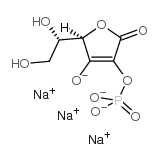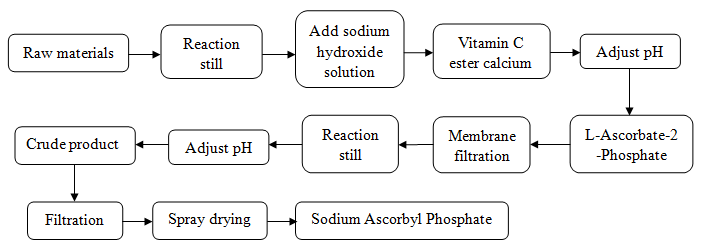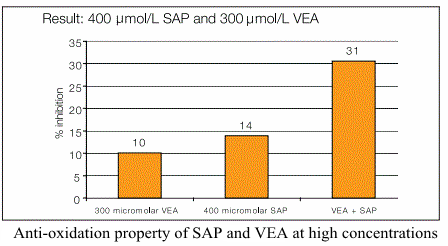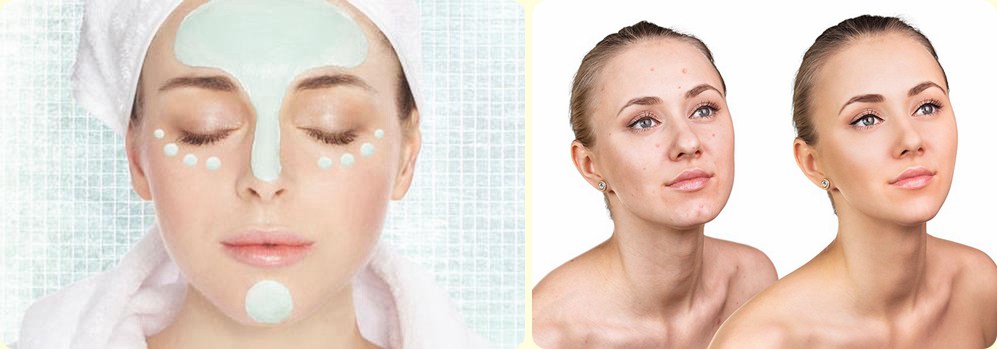1. Sodium Ascorbyl Phosphate Overview
Where to buy Sodium Ascorbyl Phosphate (SAP) Powder with lowering Sodium Ascorbyl Phosphate (SAP) price and high quality? Where to find good information of Wholesale Sodium Ascorbyl Phosphate (SAP) and Purchase Sodium Ascorbyl Phosphate (SAP) for sales? As the professional Sodium Ascorbyl Phosphate (SAP) manufacturer, BFSTAR is your best choice.
Sodium Ascorbyl Phosphate (SAP) is a stable vitamin C derivative. It is processed from vitamin C as a raw material. After entering human body, it rapidly transforms into VC through enzymolysis. Thereby, SAP plays its unique physiological and biochemical functions. Sodium Ascorbyl Phosphate is white or pale yellow powder. It is soluble in water, propylene glycol and glycerin; but it’s almost insoluble in ethanol.

Sodium Ascorbyl Phosphate is a water-soluble cosmetic whitening additive. After transdermal absorption, it can effectively resist ultraviolet damage, and capture free radicals. Also it can promote collagen production. It has anti-oxidation and anti-aging effect. Moreover, SAP can effectively prevent pigmentation; it helps to eliminate skin spots, such as freckles and age spots. In addition, Sodium Ascorbyl Phosphate has a therapeutic effect on facial acne and pimple.
| Product Name | CAS Number | INCI Name | |
| Sodium Ascorbyl Phosphate | 66170-10-3 | SODIUM ASCORBYL PHOSPHATE | |
| Molecular Weight | Molecular Formula | Molecular Structure | |
| 322.05g/mol | C6H6Na3O9P |
 |
|
| Product ID | Specificcation | Minimal Package | Minimal Order Quantity |
| BFSTAR2103 | 98% | 1KG | 1KG |
2. Sodium Ascorbyl Phosphate Source
Currently, there are two methods for the synthesis of Sodium Ascorbyl Phosphate: chemical synthesis (group protection method and direct acylation method) and microbial synthesis (biological fermentation method).
| Direct acylation | Group protection | |
| Process | Vitamin C and sodium hydroxide solution are esterified under the action of enzyme produced by microorganisms. And then post-treated to obtain Sodium Ascorbyl Phosphate. | Vitamin C is acylated in pyridine and water system. The protecting group is removed under acidic conditions. And then neutralize with alkali to obtain Sodium Ascorbyl Phosphate. |
| Advantage | Less by-products; less pollution to environment. | / |
| Disadvantage | / | Complex reaction process. After the reaction, there are many residual by-products that are difficult to remove. |
3. Sodium Ascorbyl Phosphate Manufacturer Specifications
| Product Name | Specification |
| Sodium Ascorbyl Phosphate | 98% |
| Items | Specification |
| Appearance | White or pale yellowish powder |
| Assay | ≥98% |
| Identification | IR(Infrared Ray) |
| Physical Characteristics | |
| Vitamin C content | ≥45% |
| Loss on drying | ≤11.0% |
| pH (3% aqueous solution) | 8.00–11.0 |
| Heavy Metals | |
| Heavy Metals | ≤20ppm |
| As | ≤2ppm |
4. Sodium Ascorbyl Phosphate Manufacturer Flow Chart

5. Sodium Ascorbyl Phosphate Benefits
- Anti-aging
Sodium Ascorbyl Phosphate is an effective oxygen free radical scavenger. It protects skin from UV rays, and enhances photo-protective property of sunscreens. Moreover, it is more effective in combination with vitamin E or vitamin E derivatives. Also SAP has some improvement on facial wrinkles and fine lines.

SAP refers to Sodium Ascorbyl Phosphate; VEA refers to Vitamin E acetate.
- Whitening skin
Experiments have shown that 2% Sodium Ascorbyl Phosphate in cosmetics can significantly reduce pigmentation, and whiten skin. It has no irritating effect on skin. This is because SAP is absorbed by skin and then hydrolyzed to vitamin C. Thereby it can decrease melanin formation, and inhibit pigmentation. Then SAP can exert effect of whitening skin and removing freckle.
- Acne treatment
In an in vitro study, a moderate concentration of 1% sodium ascorbyl phosphate shows a strong antibacterial effect on acne. In addition, in a study of 76.9% of patients with facial acne, the use of 5% sodium ascorbyl phosphate is significantly better than other acne treatments after 12 weeks. It has no side effects. In addition, other clinical studies have shown that SAP is more effective in treating acne than 5% benzoyl peroxide, 1% phosphate clindamycin, and 0.1% adapalene.

6. Sodium Ascorbyl Phosphate Advantages
1. Compared with vitamin C
Vitamin C is a catalyst in cell oxidation-reduction reaction. Human body cannot synthesize itself. Vitamin C must be taken from food. High activity is the advantage of vitamin C, but at the same time it is the inadequacy, mainly as follows: (1) unstable, susceptible to light, heat, etc. The reduction ability of vitamin C will be lost after decomposition. Expose vitamin C at room temperature for one day, the loss is more than 50%; and it decomposes faster under high temperature or light. (2) It is easily dehydrated and loses its activity in an acidic medium at high temperature.
The activity of vitamin C is mainly derived from two hydroxyl groups on its enol structure. If any of its hydroxyl groups are esterified with mineral acid, the stability to heat, acid and oxygen will greatly enhance. For example, the antioxidant capacity of phosphate derivatives of vitamin C in boiling water is about 10 times that of vitamin C. Compared with vitamin C, Sodium Ascorbyl Phosphate (1) is chemically stable and difficult to be oxidized; (2) has high thermal stability; (3) has high bioavailability, and can also be decomposed by phosphatase in human body. It has same effects as vitamin C.
2. Comparison with other vitamin C derivatives
Common vitamin C derivatives include vitamin C metal salts, vitamin C phosphates, vitamin C sulfates, and vitamin C palmitate.
Although vitamin C metal salt is simple and easy to obtain, it is not stable due to easy moisture absorption. Studies have found that vitamin C sulfate cannot be absorbed by body. The palmitate resources required for vitamin C palmitate are not abundant, and it is not suitable for large-scale production. The shortcomings of vitamin C phosphate magnesium in industrial production and application are mainly as follows: the crystallization yield is low; and it is difficult to separate from by-products produced by the reaction; the dissolution rate in water is very low; and it is easy to change color after being placed.
Sodium Ascorbyl Phosphate overcomes the shortcomings of the above vitamin C derivatives. It has high stability and good water solubility. It can be decomposed and utilized by phosphatase in human body. Also it is suitable for large-scale production.
7. Sodium Ascorbyl Phosphate Application and Reference Dosage
As a common whitening additive, Sodium Ascorbyl Phosphate is widely used in various functional cosmetics, such as whitening cream, lotion, facial cleanser, toner, and other anti-wrinkle skin care products.
| Application | Reference Dosage |
| Daily skin-care | 0.2-2% |
| Sunscreen | 0.2-1% |
| Skin-whitening | 3-5% |
| Treatment of acne | 5% |
Note:
- Water-soluble Sodium Ascorbyl Phosphate and oil-soluble vitamin E acetate have synergistic effect. The combination of the two forms an excellent anti-oxidation system.
- Compounding with ascorbyl palmitate also enhances SAP’s anti-oxidation property.
- In a cosmetics formulation, Sodium Ascorbyl Phosphate should be added when temperature is less than 40°C.
- Sodium Ascorbyl Phosphate is most stable above pH 6.5, and will change color when pH is lower than 6.
- Cosmetics containing Sodium Ascorbyl Phosphate should be stored below 25°C.
Sodium Ascorbyl Phosphate application cases in major cosmetic brands in the world
| Country | Brand | Product |
| USA | Elizabeth Arden | Visible Whitening Melanin Control Night Capsules with Advanced MIX ConcentrateTM |
| SUNPLAY | Skin Aqua UV Super Moisture Gel | |
| Radha Beauty | Vitamin C Serum | |
| Paula‘s Choice |
Resist Anti-Aging Clear Skin Hydrator
Skin Revealing Body Lotion with 10% AHA |
|
| Olay |
Total Effect 7 in One Moisturizing Vitamin Treatment
Natural White Pinkish Whtening Cream SPF30+/PA+++ Pro-X White Anti-yellow Repair Cream SPF30+/PA+++ |
|
| Australia | Swisse | Argan Anti-Ageing Eye Cream |
| Freeze Frame | Eye Solution | |
| Aesop | Parsley Seed Anti-Oxidant Eye Cream | |
| China | Herborist | Whitening & Revitalizing Lotion |
| Franic | Rose Buds Tone-Up Cream | |
| UNIFON | Radiant Golden Osmanthus Eye Mask | |
| Korea | MEDIHEAL |
Tea-tree Healing Solution Essential Mask
Collagen Impact Essential Mask |
| Dr. Jart | V7 Toning Light | |
| SULWHASOO) |
Time-treasure Renovating Serum Ex
Time-treasure Renovating Eye Cream |
|
| Germany | AnneMarie Borlind |
Orange Blossom Energizer
Rose Blossom Revitalizing Care |
| Eucerin Aquaphor | Lip Repair Immediate Relief | |
| UK | Dr Sebagh | Pure Vitamin C Powder Cream |
| Japan | HABA |
VC Lotion
White Lady |

8. Sodium Ascorbyl Phosphate Reference Formula
- Whitening mask
| Ingredient | Content (%) | Ingredient | Content (%) |
| Sodium Ascorbyl Phosphate | 2 | Rhodiola root extract | 0.4 |
| Butanediol | 4.25 | Diazolidinyl urea | 0.42 |
| Glycerin | 6 | Propylene glycol | 5 |
| PEG-60 hydrogenated castor oil | 0.3 | Hydroxyethyl cellulose | 0.3 |
| Disodium EDTA | 0.1 | Fragrance | 0.1 |
| Water | 81.13 |
Preparation method:
- Add 76.8% water and disodium EDTA to the stirring pot. Heat to 85°C while stirring, so that disodium EDTA is fully integrated into water, and then keep for 10 minutes.
- Add glycerin, propylene glycol, 4% butanediol, 0.4% diazolidinyl urea, hydroxyethyl cellulose to stirring pot and stir until completely dispersed.
- Cool down to 40°C, add 4.33% water, rhodiola root extract, 0.25% butanediol, 0.02% diazolidinyl urea, Sodium Ascorbyl Phosphate into stirring pot; stir evenly.
- Add PEG-60 hydrogenated castor oil and fragrance to stirring pot. Stir evenly, and then cool down to 15°C to obtain the mask.
- Nourishing facial mask fluid
| Ingredient | Content (%) | Ingredient | Content (%) |
| Sodium Ascorbyl Phosphate | 1 | Allantoin | 0.1 |
| Xanthan gum | 0.15 | Glycerin | 4 |
| Butanediol | 3 | Sodium hyaluronate | 0.03 |
| Hydroxyethyl urea | 1 | Sorbitol | 1 |
| Bearberry leaf powder | 2 | Cucumis Sativus Fruit Extract | 0.2 |
| Grapefruit peel extract | 0.5 | Pomegranate peel extract | 0.1 |
| Iodopropynyl butylcarbamate | 0.2 | Diazolidinyl urea | 0.2 |
| Fragrance | 0.3 | Deionized water | 86.22 |
- Whitening emulsion
| Phase | Ingredient | Content (%) | Ingredient | Content (%) |
| Phase A | Sodium Ascorbyl Phosphate | 0.3 | Xanthan gum | 0.3 |
| 1,2-Propylene glycol | 9.73 | Sorbitol | 2.22 | |
| Diglycerol | 0.33 | Methyl gluceth-20 | 1.73 | |
| Water | 72.91 | Aminopropanol ascorbic acid phosphate | 0.3 | |
| Ethylresorcinol | 0.3 | EDTMP·Na5 | 0.1 | |
| Pentasodium pentetate | 0.1 | Citric acid | 0.05 | |
| Sodium hydroxide | 0.023 | Methylparaben | 0.2 | |
| Phenoxyethanol | 0.6 | |||
| Phase B | PEG-100 stearate | 1.5 | Inulin Lauryl Carbamate | 0.4 |
| Mineral oil | 3.0 | Olive oil | 1.0 | |
| Octanoglycerate | 2.0 | Glyceryl stearate | 0.7 | |
| Polydimethylsiloxane | 1.74 | Propylparaben | 0.08 | |
| Phase C | Leontopodium alpinum flower/leaf extract | 0.1 | Ginseng root extract | 0.1 |
| Fragrance | 0.127 | 1% Xanthein CI15985 | 0.06 |
Preparation method:
- Mix the raw materials of phase A and heat to 85°C; stir evenly, and keep at 85°C for use.
- Mix the raw materials of phase B and heat to 85°C; stir evenly, and keep at 85°C for use.
- Mix the materials obtained in the above steps 1 and 2. Use a homogenizer; keep at 83-85°C and homogenize at 2800 rpm for 15 minutes, and then cool to 38°C.
- Add the raw materials of phase C and mix well to obtain the whitening emulsion.
Note: The formulation’s water activity is 0.87; pH is 4.3; and viscosity is 7500cps at room temperature.
- Sunscreen lotion
| Phase | Ingredient | Content (%) | Ingredient | Content (%) |
| Phase A | Cremophor W07 | 6 | Cremophor RH40 | 0.5 |
| Isopropyl palmitate | 7 | Elfacos ST9 | 2.0 | |
| Jojoba oil | 3.0 | Magnesium stearate | 0.6 | |
| Uvinul MC80 | 8.0 | Finsolv TN | 5.0 | |
| Kemira 160 | 4.0 | |||
| Phase B | Propylene glycol | 5.0 | Disodium EDTA | 0.2 |
| Preservative | Appropriate | Deionized water | 57.20 | |
| Phase C | Vitamin E acetate | 0.5 | Sodium Ascorbyl Phosphate | 1.0 |
Preparation method:
Heat phase A and phase B raw separately to 80°C, and then put phase A into phase B and homogenize. Then add phase C materials and homogenize to obtain the sunscreen lotion.
- Body lotion
| Phase | Ingredient | Content (%) | Ingredient | Content (%) |
| Phase A | Cremophor RH40 | 1.5 | Fragrance | Appropriate |
| Phase B | Propylene glycol | 3.0 | Bisabolol | 0.1 |
| Ethanol | 15.0 | Witch hazel distillate | 2.0 | |
| Water | 78.2 | Sodium Ascorbyl Phosphate | 0.2 |
Preparation method:
Dissolve phase A ingredients. Dissolve phase B and stir it into phase A.
Note: adjust pH value to 5-6.
- Anti-wrinkle night cream
| Phase | Ingredient | Content (%) | Ingredient | Content (%) |
| Phase A | Cremophor W07 | 6 | Paraffin | 10.0 |
| Vaseline | 3.0 | Miglyol 812 | 5.0 | |
| Elfacos ST9 | 2.0 | Jojoba oil | 5.0 | |
| Claytone XL | 1.0 | |||
| Phase B | Propylene glycol | 3.0 | Disodium EDTA | 0.1 |
| Preservative | Appropriate | Water | 63.4 | |
| Phase C | Retinol | 1.0 | Sodium Ascorbyl Phosphate | 0.5 |
| Fragrance | Appropriate |
Preparation method:
Heat phases A and B ingredients separately to 85°C. Stir phase B into phase A and homogenize thoroughly. Cool to 40°C; then add phase C and homogenize again.
- Whitening cleanser
| Ingredient | Content (%) | Ingredient | Content (%) |
| Sodium Ascorbyl Phosphate | 1.0 | Magnesium Ascorbyl Phosphate | 1.0 |
| Vitamin E sodium phosphate | 1.0 | Avocado oil | 11.0 |
| Behenyl alcohol | 0.6 | Stearic acid | 0.4 |
| Glycerin fatty acid ester | 0.9 | Sorbitan fatty acid ester | 1.1 |
| Polyoxyethylene alkyl ether | 0.4 | 1,3- butanedio | 10.1 |
| Methyl benzoate | 0.2 | Fragrance | 0.4 |
| Water | Add to 100 |
9. Sodium Ascorbyl Phosphate Safety
- The CIR Expert Panel has experimentally concluded that sodium ascorbyl phosphate is safe for use in cosmetics;
- According to Australian National Industrial Chemicals Notification and Assessment Scheme, the maximum concentration of sodium ascorbyl phosphate in most cosmetic formulations is 5%; and the maximum concentration in sunscreen products is 1%. Otherwise it causes side effect such as skin irritation.
- Sodium Ascorbyl Phosphate has been included in The Catalog Of the International Cosmetics Raw Material Standard Chinese Name issued by Food and Drug Administration in 2010.
10. Packing and Storage
Package: Packed in 25kg paper drums with two plastic bags inside.
Storage: Stored in a cool dry place and away from direct sunlight and oxidizing agents.


